Epimediums – barrenworts – A Comparison
Below are all of the Epimediums we grow all collected on a single page so you can easily scroll through the list to make your selection. I’ve organised them along botanical lines, grouping related varieties together. Hybrids are all at the end. Clicking on any of the pictures will take you directly to the appropriate page in our online shop.
These Links will navigate you quickly through the list
Subgenus Epimedium
Series A . Campanulatae – E.campanulatum, E.platylpetalum
Series B. Davidianae – E.davidii, E.epsteinii, E.ilicifolium, E.ogisui, E.pauciflorum
Series D. Brachycerae – E.brevicornu, E.dolichostemon, E.fargesii, E.myrianthum, E.stellulatum
Section ii Macroceras – E.grandiflorum
Section iv Epimedium – E.alpinum, E.pubigerum
Subgenus Epimedium
This subgenus contains the vast majority of species, all of which have leaves on the flowering stems. They come from all places across the globe that Epimedium grow with the exception of North Africa.
- Section i Diphyllon
- – Series A Campanulatae
The flowers of these varieties are all bell shaped
- – Series B Davidianae
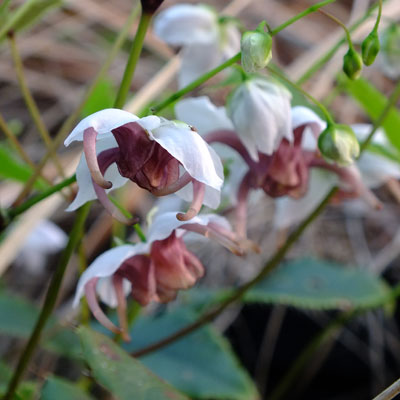
Epimedium epsteinii

Epimedium ogisui
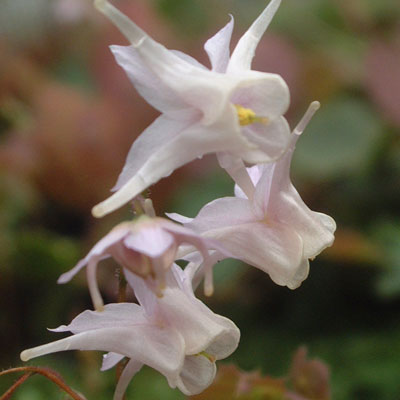
Epimedium pauciflorum
Epimedium pauciflorum
- – Series C Dolichocerae
- – Series D Brachycerae
- Section ii Macroceras
Epimedium grandiflorum ‘La Rocaille’
Epimedium grandiflorum ‘Lilacinum’
Epimedium grandiflorum ‘Nanum’
Epimedium grandiflorum ‘Purple Pixie’
Epimedium grandiflorum ‘Queen Esta’
Epimedium grandiflorum ‘Rose Queen’
Epimedium grandiflorum ‘Rubinkrone’
(Ruby Crown)
Epimedium grandiflorum ‘Shiho’
Epimedium grandiflorum ‘Sirius’
Epimedium grandiflorum forma. violaceum
Epimedium grandiflorum ‘White Queen’
Epimedium grandiflorum ‘Yellow Princess’
Subgenus Rhizophyllum
These species have only basal leaves and are exclusively from the Caucasus and North Africa
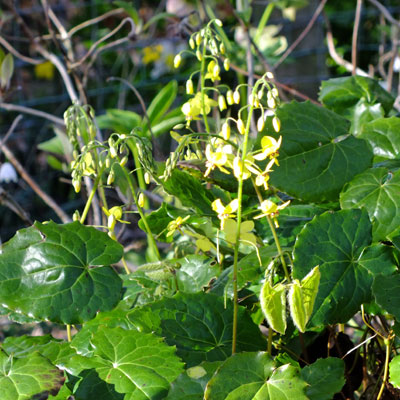
Epimedium perraldianum
Epimedium perraldianum

Epimedium pinnatum subsp. Colchicum
Hybrids
These varieties are all the result of inter species crosses and are attributed to a hybrid specific epithet
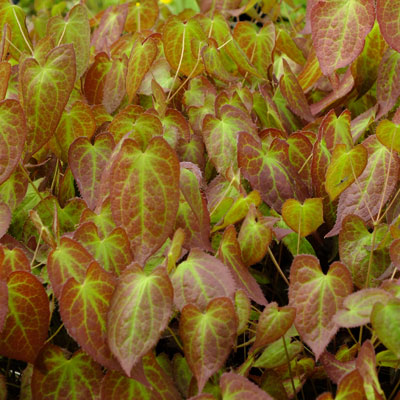
Epimedium x versicolor ‘Discolor’
Hybrids
Like the section above, all of these Epimediums are the result of interspecies crosses, but these are just referred to by a fancy name ( ie there is no specific epithet )
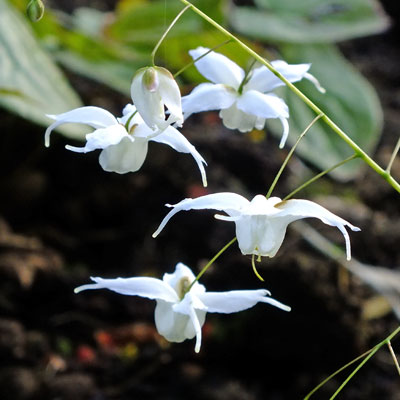
Epimedium ‘Arctic Wings’
Epimedium ‘Arctic Wings’
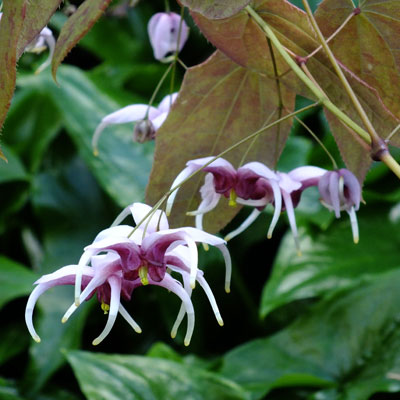
Epimedium ‘Madame Butterfly’
Epimedium ‘Madame Butterfly’
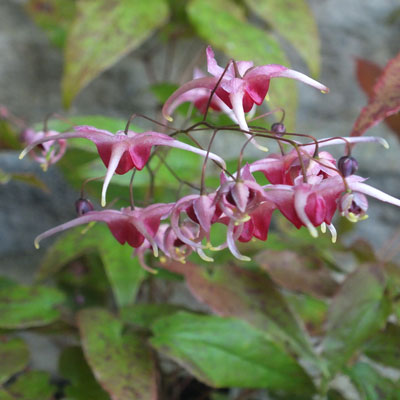
Epimedium ‘Pink Champagne’
Epimedium ‘Pink Champagne’
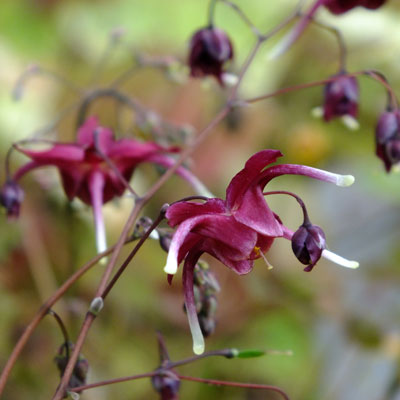
Epimedium ‘Red Maximum’
Epimedium ‘Red Maximum’
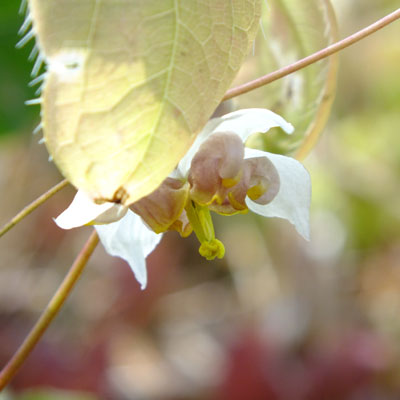
Epimedium ‘Spinners’
Epimedium ‘Spinners’ (Spinners Special)
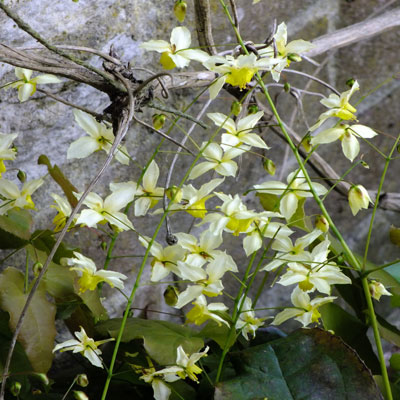
Epimedium ‘Totnes Turbo’
Epimedium ‘Totnes Turbo’

‘Delightful at all times for many of them are evergreen, their Spring leaf tints which follow the flowers are delicious, and in Autumn they fall into tone with the season with rich tints of brown, russet and gold.’ – A.T. Johnson
Epimediums are a rare thing; they are both exquisitely beautiful and highly tolerant in regard to growing conditions. In British gardens they grow well in all but the wettest and most alkaline soils, with many being very tolerant of dry conditions where they can provide superb ground cover; the Epimedium x perralchicum varieties excel particularly as do forms of Epimedium x versicolor. The one constant is that they all require a degree of shade. Whilst many do cope well with dry shade, more moisture and humus in the soil is beneficial. It tends to be the Japanese species that are least tolerant of alkaline conditions and the Mediterranean and Caucasus species that are most tolerant of dry. It is the Chinese species that tend to need a little more protection in Winter.
In order to best view the flowers, and in many cases to get the best from the beautifully marked new leaves it can be beneficial to cut away all of the old leaves in early Spring just as the flower spikes break the surface. In this way you get the best from the evergreen foliage and the best from the flowers.
Epimediums are members of the same plant family as the shrubs Berberis and Mahonia, a fact that may not be obvious from the foliage, but makes a lot of sense when the flowers are seen at close quarters. Across the Genus the flowers vary greatly in shape. In some the sepals are well rounded and the flowers face out, but in others the flowers hang and the sepals are long spurs giving the flower a crab –like shape.
Barrenworts occur in the wild from the Mediterranean East to Japan with their greatest numbers being found in the Orient.
The common name ‘barrenwort’ comes from a belief that the root could prevent women becoming pregnant. This may be of some comfort when you consider other common names, such as horny goat weed, which stems from the legend of a Chinese goat herder noticing increased sexual activity in his animals after eating Epimedium. The dried leaves of Epimedium grandiflorum are used as a tonic in China called Fang-chang tsao (translated as ‘give up stick’) on account of its tonic effect on the elderly.
Epimedium – Berberidaceae
Bishop’s Hat, Bishop’s Mitre, Barrenwort, fairy wings, horny goat weed, rowdy lamb herb, randy beef grass, yin yang huo.

















































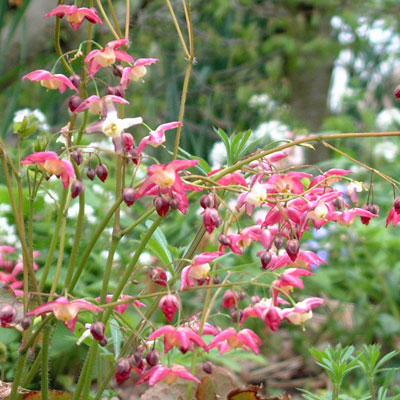
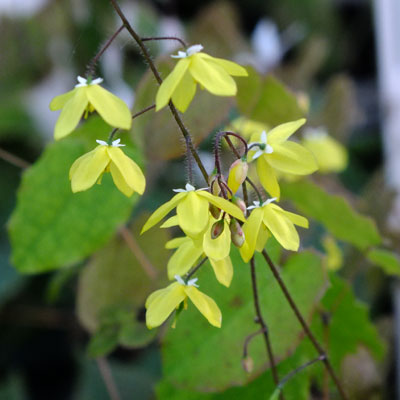

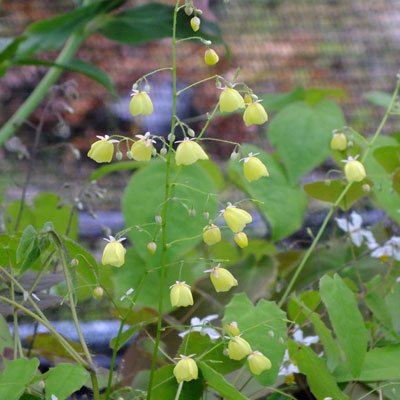



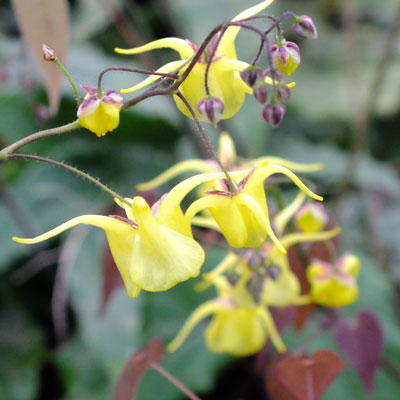












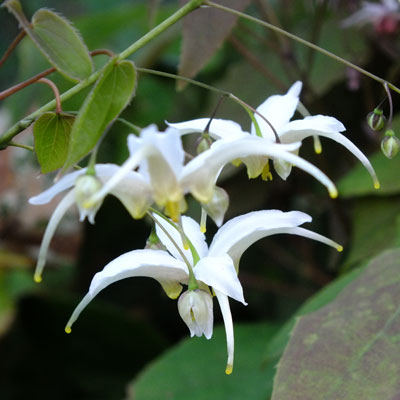



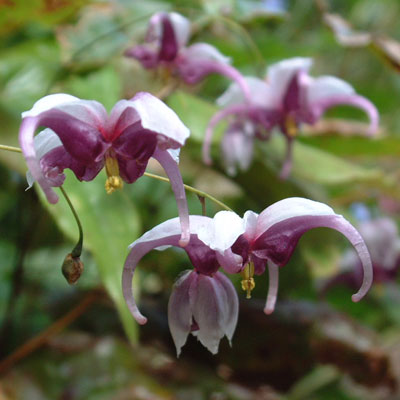





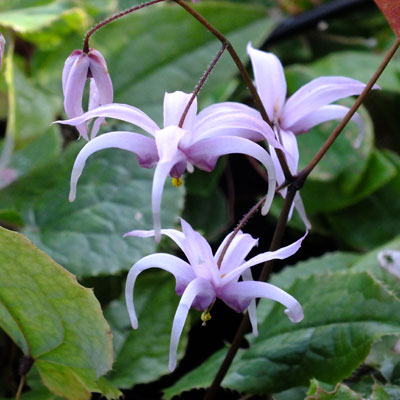







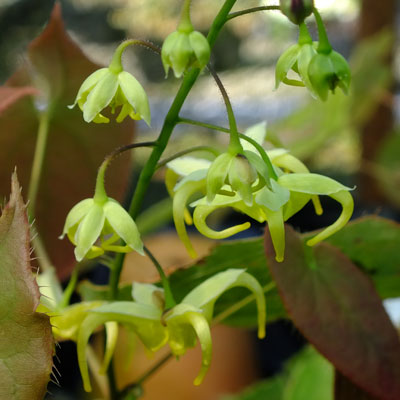





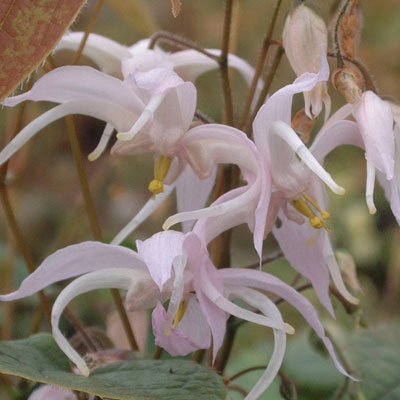


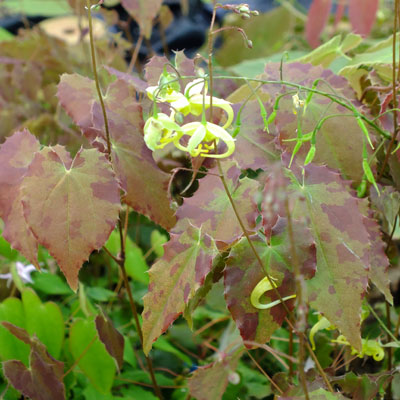











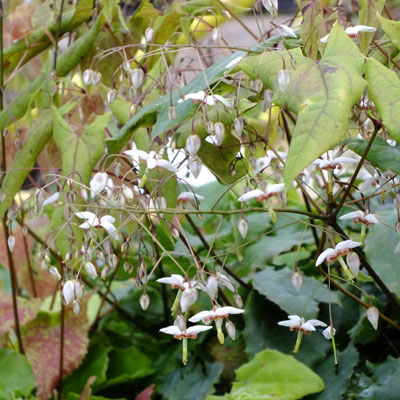



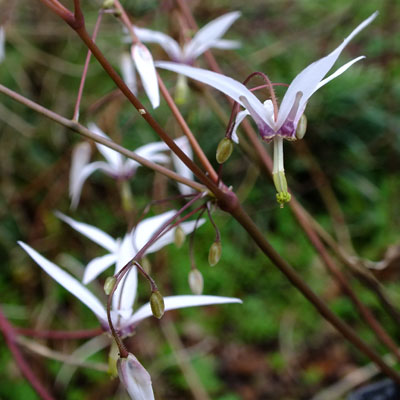




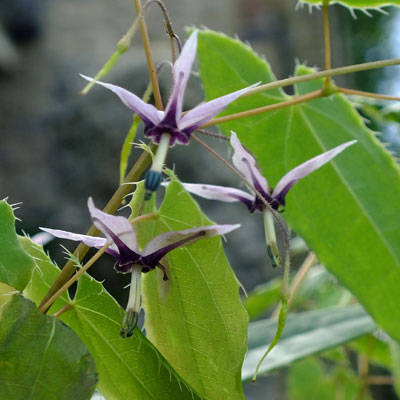



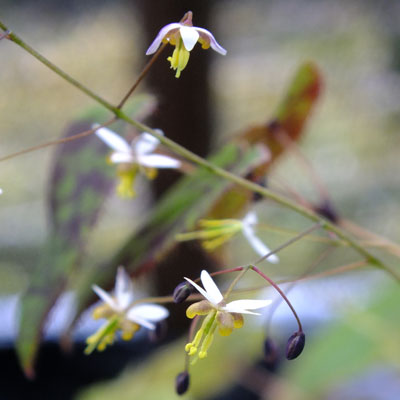











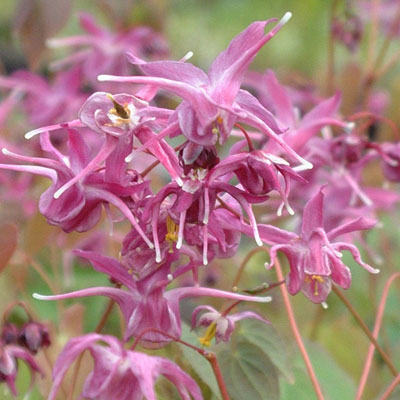



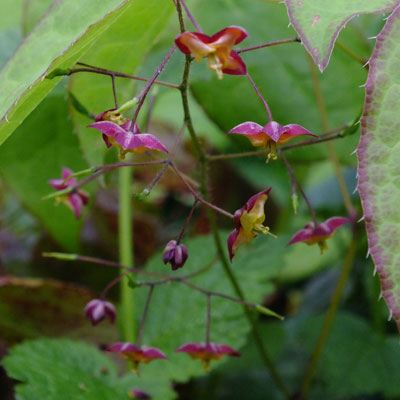

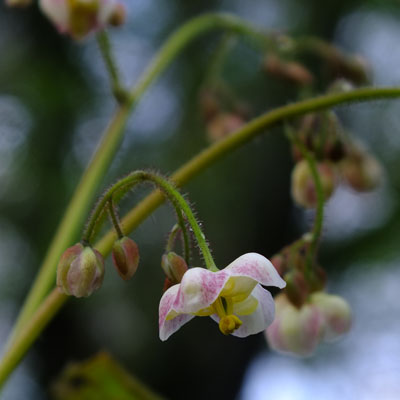







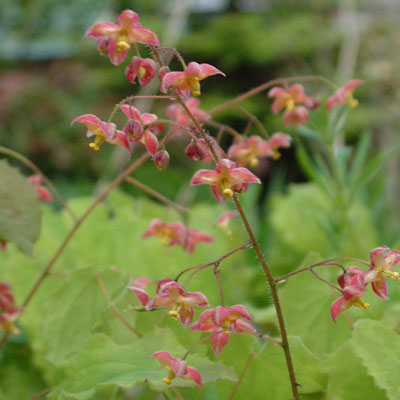
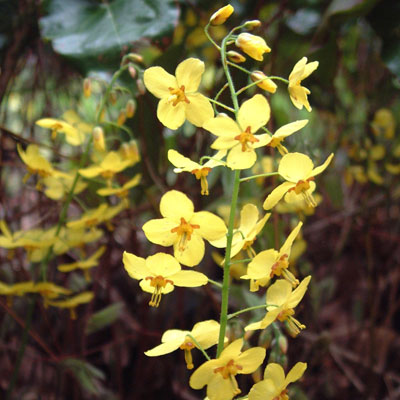





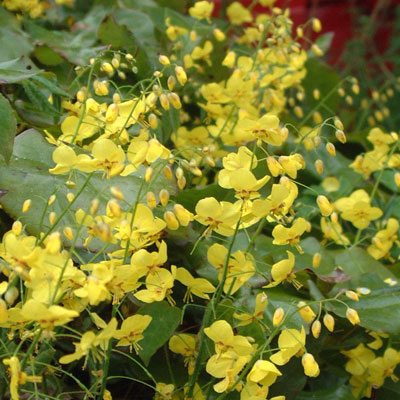
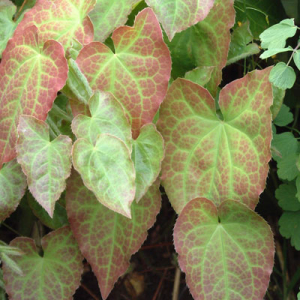










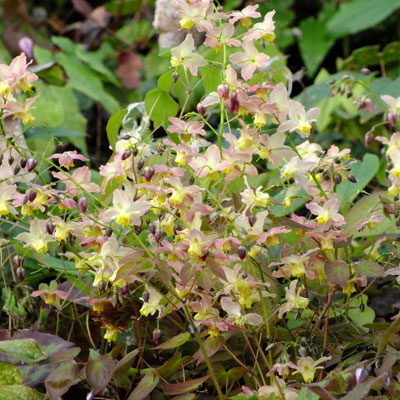






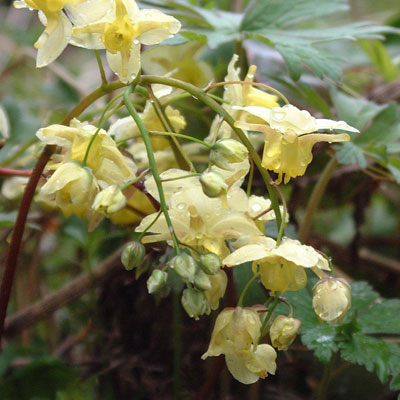





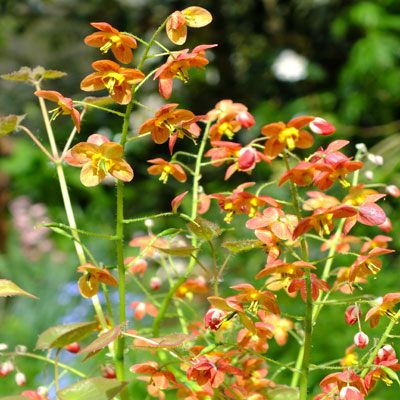





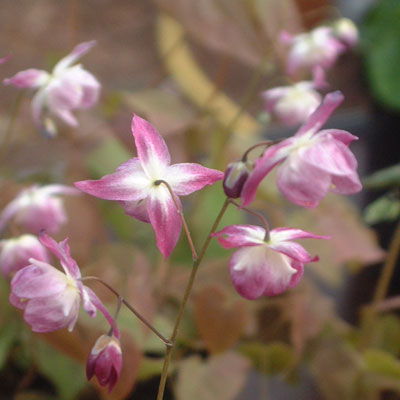
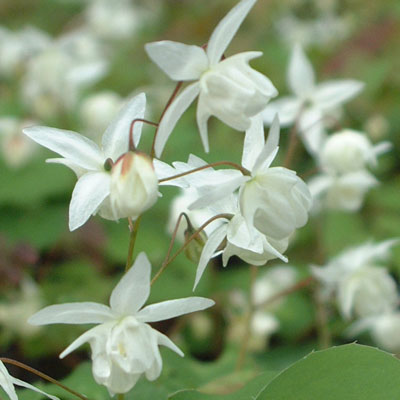
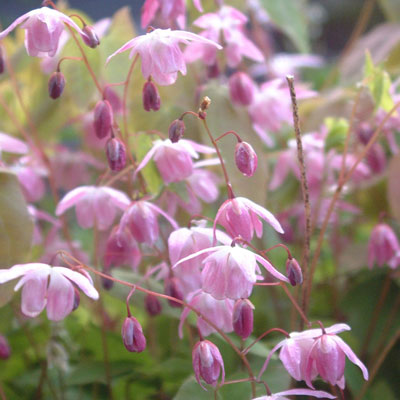
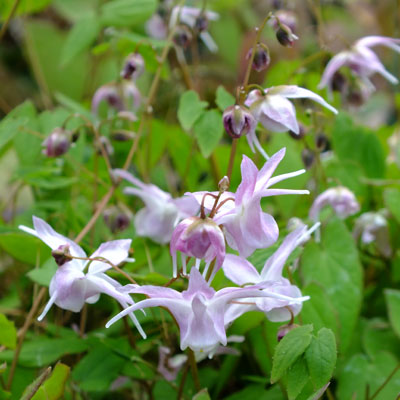
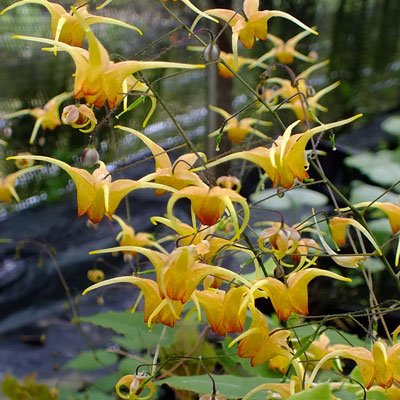



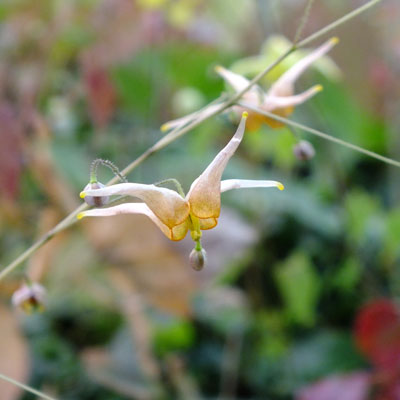








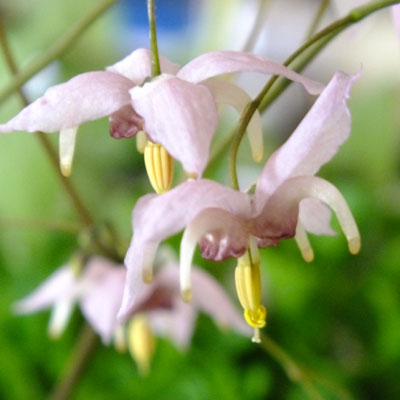



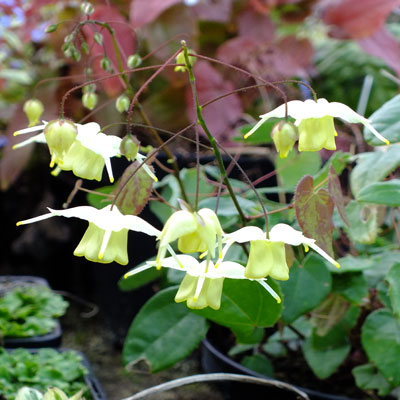



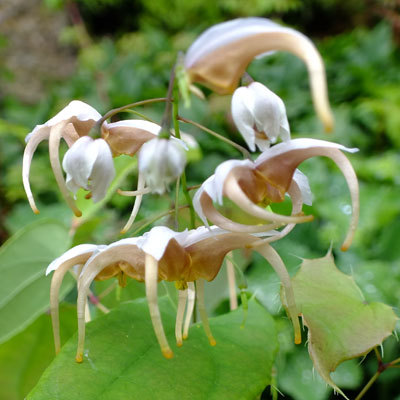





















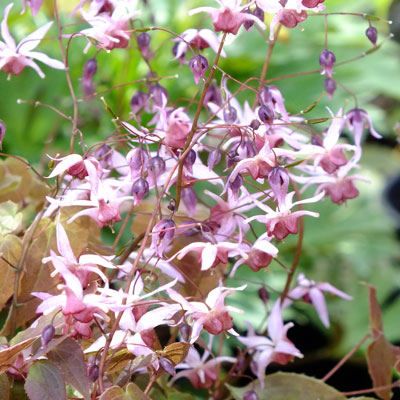











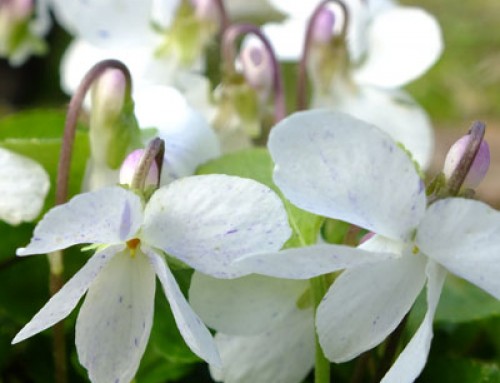

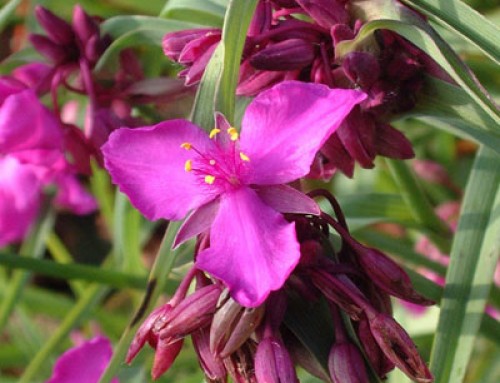
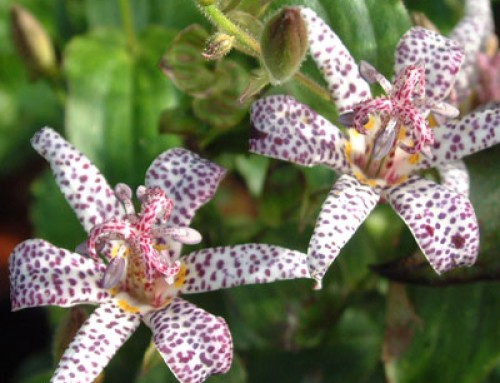
Leave A Comment
You must be logged in to post a comment.